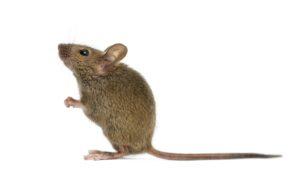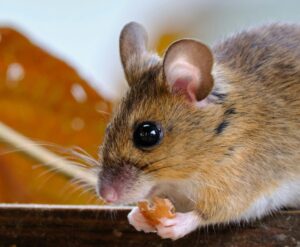Yellowjackets are one of the most feared stinging insects in Northern Illinois, especially during the late summer and early fall. But there’s more to these aggressive wasps than just their painful sting. Whether you’re in Algonquin, Elgin, St. Charles, or Naperville, these buzzing insects are a familiar sight—but how much do you really know about them? If you are looking for our Yellowjacket and wasp elimination services, click here to take a look at what we offer and schedule an appointment online!
Let’s dive into some fun (and a little frightening) facts about yellowjackets and how they behave here in Northern Illinois.
🐝 1. Yellowjackets Aren’t Bees—They’re Wasps
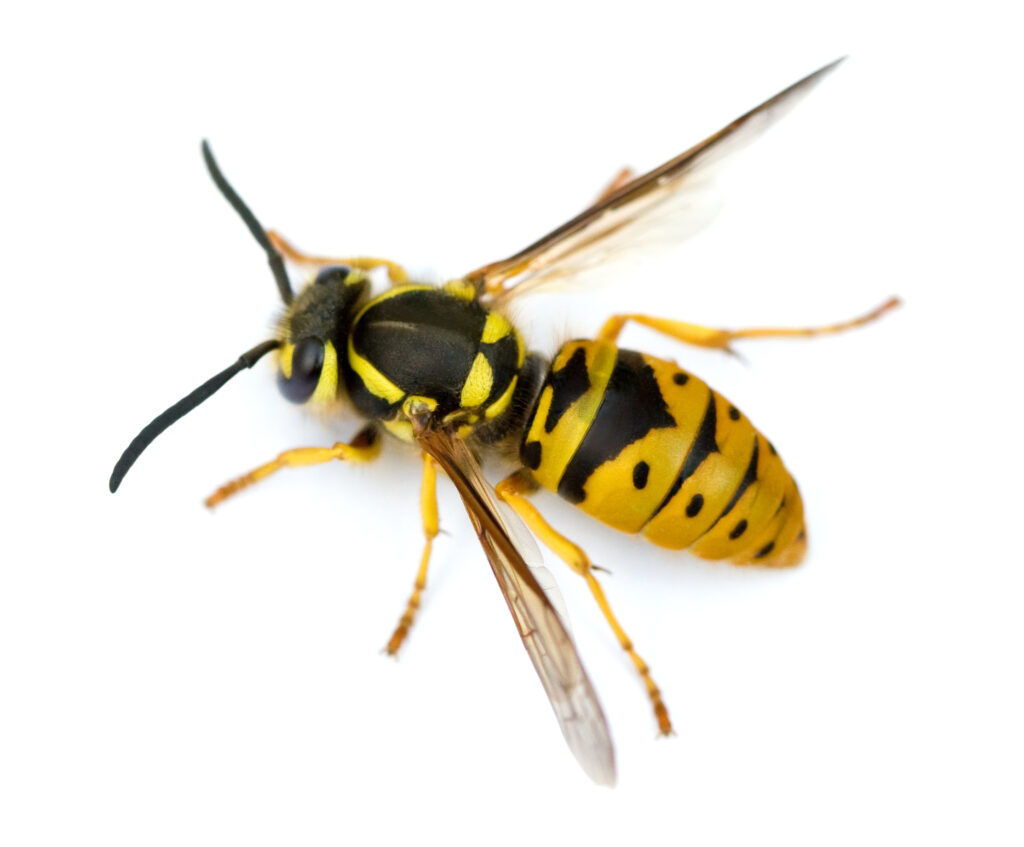
Despite their bee-like appearance, yellowjackets are not bees at all. They’re actually a type of social wasp. While bees are typically pollinators, yellowjackets are scavengers and hunters. They’re sleek, with bright yellow and black stripes, and lack the fuzzy bodies that bees have.
They are also different from ground bees, which are solitary insects that very rarely sting.
🧬 2. Several Species Call Northern Illinois Home
Northern Illinois is home to multiple species of yellowjackets, including:
Eastern Yellowjacket (Vespula maculifrons)
German Yellowjacket (Vespula germanica)
Southern Yellowjacket (Vespula squamosa)
Baldfaced Hornet (Dolichovespula maculata) – technically not a true yellowjacket, but often grouped with them due to behavior and appearance
In places like Naperville and Elgin, the German yellowjacket is especially notorious for nesting inside wall voids and attics.
🏠 3. They Build Nests in Surprising Places
Yellowjackets commonly nest in the ground, especially in abandoned rodent burrows, but they’re also known to create aerial nests under decks, eaves, attics, and wall cavities.
In suburban areas like Algonquin and St. Charles, ground nests are a major concern for homeowners who spend time gardening or mowing the lawn—often without knowing a nest is nearby until it’s too late.
Pro Tip: If you hear buzzing or scratching noises inside your wall or see yellowjackets entering a crack near your home’s foundation, don’t try to seal it or spray foam inside—this can trap them indoors and drive them into your living space.
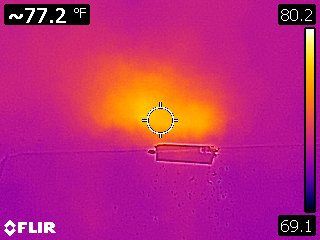

🍔 4. Your BBQ Is Their Favorite Restaurant
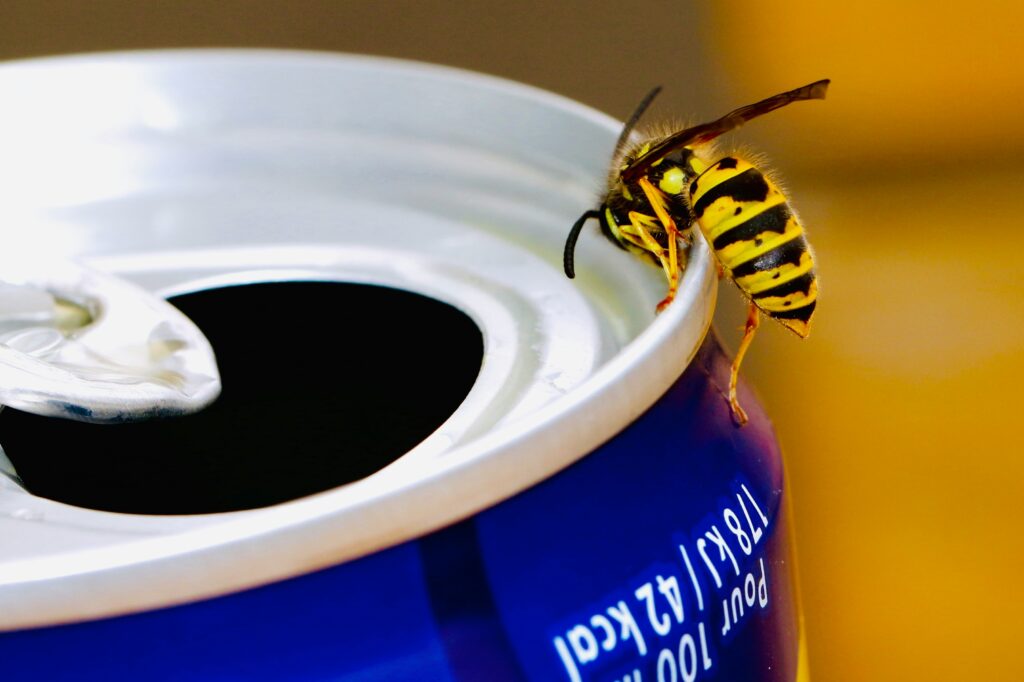
Yellowjackets are aggressive scavengers and love sugary drinks, meats, and sweets. This makes late-summer picnics and outdoor barbecues in Northern Illinois hotspots for yellowjacket activity. They’re particularly persistent in August and September, when natural food sources decline.
Watch out for them on soda cans and bottles, as they sometimes enter them and sting an unsuspecting person in the mouth, which can be particularly dangerous.
🔥 5. DIY Treatments Can Be Dangerous
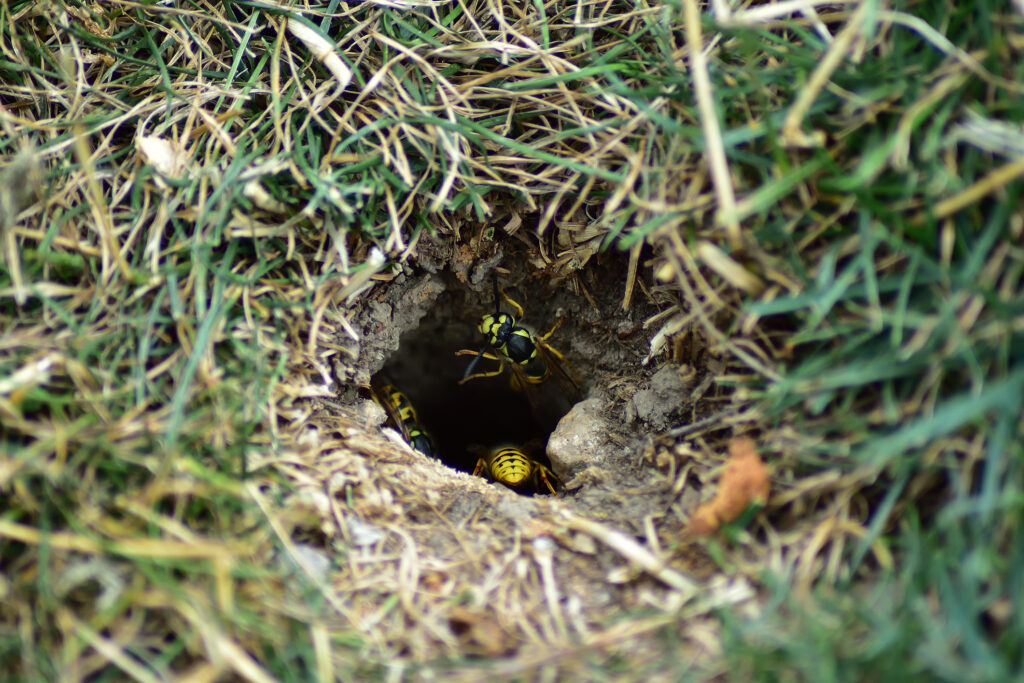
Each summer, we get calls from homeowners in Naperville and Elgin who tried to treat a yellowjacket nest on their own—and regretted it. These wasps defend their nests aggressively and can sting multiple times. Agitating a nest can lead to dozens of painful stings and even emergency medical care for allergic individuals.
Over-the-counter sprays often fall short, especially when the nest is large or hidden in a wall void. Often times this will just cause a temporary dip in population, since the queen and larvae will not be affected by a spray only done at the entrance.
🌡️ 6. Their Colonies Die Off in Winter (But the Queens Survive)
Yellowjacket colonies collapse with the cold weather, typically around the first frost in Northern Illinois. But the fertilized queens survive by hiding in protected spots like leaf litter, tree bark, or even your attic. Come spring, they emerge to start the cycle all over again.
We frequently get calls for lone wasps flying around homes in the spring and fall. Do not worry if you see them on their own in the home at the beginning or end of the warm months, they are simply wasps that got lost either finding a place to overwinter or went the wrong way after waking back up.
🏡 7. Pest Control Pros in Northern Illinois Know Their Habits
Whether you live in a dense suburb like Naperville, a wooded area in Algonquin, or anywhere across the Fox Valley region, local pest control professionals are trained to identify yellowjacket species, locate hidden nests, and use specialized treatments that eliminate the colony quickly and safely.
At Fox Valley Environmental Pest Control, we’ve helped hundreds of families throughout Elgin, St. Charles, and Naperville stay safe from aggressive wasp infestations.
⚠️ 8. Yellowjackets Defend Their Nests With Aggression and Precision
One of the most dangerous aspects of yellowjackets—especially for residents in Naperville, Algonquin, Elgin, and St. Charles—is how fiercely they defend their nests.
Unlike honeybees, which die after stinging, yellowjackets can sting repeatedly, injecting venom each time. When they perceive a threat near their nest—whether it’s a curious child, a lawnmower, or even foot traffic—they respond in seconds, swarming the intruder and stinging in coordinated waves.
They also release an alarm pheromone that signals other yellowjackets to attack. This is why some people experience multiple stings in rapid succession, even if they weren’t the original target.
In-ground nests are especially dangerous because they’re nearly invisible until it’s too late—and are often disturbed by accident during yard work or landscaping.
Trying to treat a yellowjacket nest yourself in Northern Illinois isn’t just risky—it can turn a minor pest problem into a serious medical emergency within minutes. It can take just a few stings to kill a person who is highly allergic, particularly if the stings occur close to sensitive areas like the face and neck. Elderly people are at an elevated risk, and people of any age can succumb to wasp stings if hundreds attack.
Final Buzz: Know the Risks, Know Who to Call
Yellowjackets are more than just annoying—they’re dangerous. If you’re dealing with aggressive wasps on your property in Northern Illinois, avoid the risk of DIY treatments and call a licensed pest professional. Safe, effective yellowjacket control starts with local knowledge and the right tools.
🧠 Related FAQs
Q: How can I tell if I have a yellowjacket nest nearby?
A: Watch for fast-moving wasps entering and exiting the same hole in the ground or your home’s siding. This is a sure sign of a nearby nest.
Q: Are yellowjackets active at night?
A: No, yellowjackets are diurnal. They return to the nest around dusk, which is why professionals often treat nests early in the morning or after sunset.
Q: Are yellowjackets beneficial in any way?
A: Yes—while they’re a nuisance, yellowjackets help control other pests like flies and caterpillars. However they are a much bigger hazard to people. This is due to their extreme aggression, and tendency to make nests in unsuspecting spots like lawns and mulch where people discover them on accident.
📍 Serving Northern Illinois Cities
If you’re in Algonquin, Elgin, St. Charles, Naperville, or surrounding areas and suspect a yellowjacket infestation, contact Fox Valley Environmental Pest Control today at 630-513-1334 for fast, expert service.


